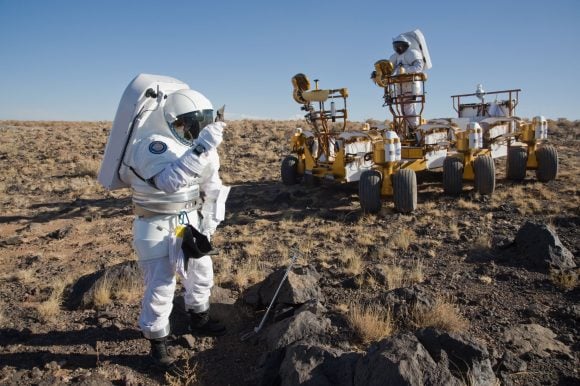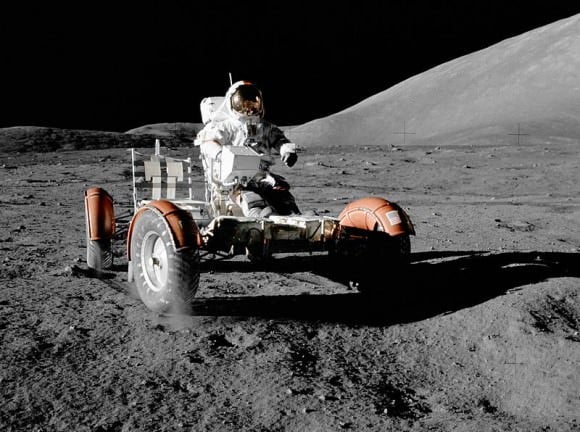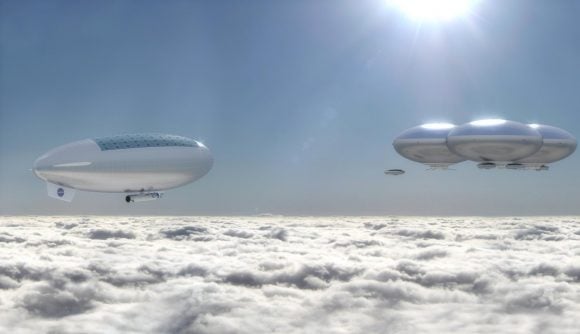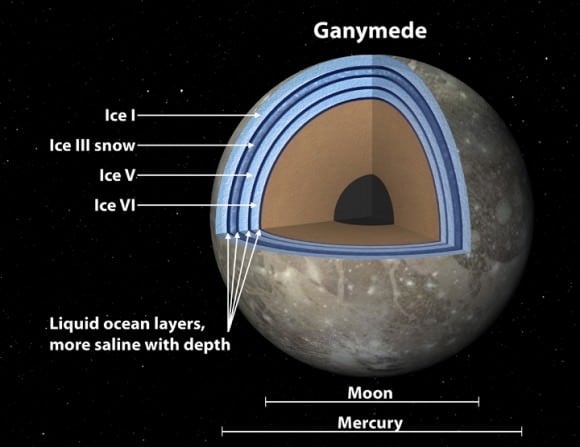[embed]
It's been a while since I read the NASA manual on space helmet operation, but if I recall correctly, they really just have one major rule. When you go to space, keep your space helmet on.
I don't care what haunting music those beguiling space sirens are playing. It doesn't matter if you've got a serious case of space madness, and you're hallucinating that you're back on your Iowa farm, surrounded by your loved ones. Even if you just turned on an ancient terraforming machine and you're stumbling around the surface of Mars like an idiot. You keep your helmet on.
[caption id="attachment_131039" align="aligncenter" width="580"]
Keep. Your. Helmet. On. Credit: NASA[/caption]
Not convinced? Well then, allow me to explain what happens if you decide to break that rule. Without a helmet, and your own personal Earth-like atmosphere surrounding you, you'll be exposed to the hard vacuum of space.
Within a moment, all the air will rush out of your lungs, and then you'll fall unconscious in about 45 seconds. Starved for oxygen, you'll die of suffocation in just a couple of minutes. Then you'll freeze solid and float about forever. Just another meat asteroid in the Solar System.
That's the official stance on space helmet operation, but just between you and me, there might be a little wiggle room. A few other places in the Solar System where you can take your helmet off for just a moment, and maybe not die instantaneously.
Earth is obviously safe. If you're down here on the planet, and you're still wearing your helmet, you're missing the whole point of why you need a helmet in the first place. That space helmet rule only applies to space, silly, you can take it off down here.
In order to survive, the human body needs a few things. First, we need pressure surrounding our body, and helping to keep our lungs inflated. The Earth's atmosphere provides that service, stacking a huge column of air down on top of you.
Without enough pressure, the air will blast out of your lungs and you'll suffocate. Too much pressure and your lungs will crush and your heart will give out.
You're going to want atmospheric pressure somewhere between .5 to 5 times the atmosphere of Earth.
If you can't find air, then some other gas or even water will do in a pinch. You can't breathe it, but it can provide the pressure you're looking for.
[caption id="attachment_121074" align="aligncenter" width="580"]
Do not take your helmet off on the Moon. Credit: NASA[/caption]
If you've got the pressure right, then your next priority will be the temperature. You know what it's like to be too cold on Earth, and too hot, so use your judgement here. It's too cold if you're starting to die of hypothermia, and too hot if you're above 60 C for a few minutes.
If you really want to thrive, find air you can breathe. Ideally a nice mixture of nitrogen and oxygen. Again, here on Earth, that column of air pushing down on you also allows you to breathe. If you swapped air for carbon dioxide or water, you're going to need to hold your breath.
So what are some other places in the Solar System that you could take your helmet off for a few brief moments?
Your best bet is the planet Venus. Not down at the surface, where the temperature is hot enough to melt lead, and it's 90 atmospheres pressure.
But up in the cloud tops, it's a whole different story. At 52.5 kilometers altitude, the temperature is about 37 C. A little stifling, but not too bad. And the air pressure is about 65% Earth's air pressure.
[caption id="attachment_131040" align="aligncenter" width="580"]
Hold your breath if you're planning on taking off your helmet within the clouds of Venus. Credit: NASA[/caption]
The problem is that this region is right in the middle of Venus' sulphuric acid cloud layer, so you might inhale a mist of toxic acid if you tried to breathe. Not to mention the fact that Venus' atmosphere is carbon dioxide, which means you'll asphyxiate if you tried to breathe it.
But assuming you had some kind of air supply to breathe, and a suit to protect you from the sulphuric acid, you could hang around, without a helmet as long as you liked.
Take that! Overly draconian NASA helmet rules.
Out on the surface of Titan? Good news! The surface pressure on Titan is 1.45 times that of Earth. You won't need a pressure helmet at all, ever. You will need a warming helmet, however, since the temperature on Titan is -179 C. You might be able to take that helmet off for a brief moment, before your face freezes, but don't take a breath, otherwise you'll freeze your lungs.
Want another location? No problem. Astronomers are pretty sure there are vast reservoirs of water under the surface of many moons and large objects in the Solar System, from Europa to Charon.
[caption id="attachment_111635" align="aligncenter" width="580"]
This artist's concept of Jupiter's moon Ganymede, the largest moon in the solar system, illustrates the club sandwich model of its interior oceans. You could try taking your helmet off while diving in them. Credit: NASA/JPL[/caption]
They're heated up through tidal interactions, and could be dozens of kilometers thick. Drill down through the ice sheet, and then just dive into the icy waters without a helmet. It'll be really cold, and you won't be able to breathe, but you can stay alive as long as you can hold your breath.
Did you jump out of your spacecraft and now you're falling to your death into one of the Solar System's gas giants? That's bad news and it won't end well. However, there's a tiny silver lining. As you fall through the atmosphere of Jupiter, for example, there'll be a moment when the temperature and pressure roughly match what your body can handle.
Go ahead and take your helmet off and enjoy that sweet spot before you plunge into the swirling hydrogen gas. Once again, though, don't breathe. Hold your breath, the moment will last longer before you go unconscious.
And listen, if you really really need to take off your helmet in the cold vacuum of space, you can do it. Make sure you completely exhale so you don't wreck your lungs. Then you've got about 45 seconds before you go unconscious.
That's enough time to jump across to an open airlock, or kick that nasty xenomorph holding onto your leg into deep space.
Even though the NASA space helmet manual has one rule - keep your helmet on - you can see there are a few times and places where you can bend those rules without instantly dying. Use your judgement.
I'd like to thank Mechadense for
posting a comment
on an earlier Guide to Space YouTube video, which became the inspiration for this episode. Thanks for doing the math Mechadense and bringing the science.
 Universe Today
Universe Today




